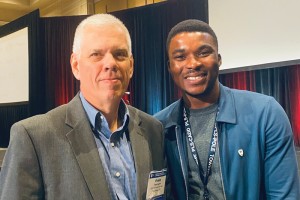Job interviews are stressful. The interviewer and interviewee alike often play an unconscious game of chicken, each trying to second guess what the other really wants to hear. Engineering graduates and early career professionals often share their goal of attaining P.E. or S.E. licensure. Yet this is often just a rote answer because it sounds like what an employer wants to hear. Clearly, an engineering license is a critical step in a career; it leads to promotion, status, and increased responsibility. Yet, many new graduates and engineers-in-training (EITs) do not fully grasp what it will take or what it means. This is not surprising considering most firms eagerly await the chance to announce the new P.E. or S.E. within their ranks and often push passage before preparation. In lieu of pushing staff to pass an exam, the profession of structural engineering will be better served when firm leaders and mentors prepare staff members for success.
…Review Category : Editorial
It has been less than four years since the 2019 publication of the foundational provisions developed to advance performance-based wind design into practice, and the Structural Engineering Institute (SEI) of the American Society of Civil Engineers (ASCE) is leading the way on two additional steps forward.
…As I embark on my year as NCSEA President, I have a renewed sense of awareness and appreciation of all of the great work that CASE, NCSEA, and SEI are doing to advance the Structural Engineering profession. I am also inspired by the engagement of so many individuals within various levels of our organizations, working together with a common purpose. Those who have engaged already recognize the value of participation and the benefits of both investing in their career and doing their part to help advance our profession. If you missed it, I encourage you to read the editorial by Jeannette Torrents from the February issue on “The Value of Participation.”
…
It is said that if you are risk averse, don’t bother getting out of bed in the morning. The structural engineering profession is no exception, which practitioners know all too well. In fact the Coalition of American Structural Engineers (CASE) was born out of the idea of risk management for structural engineers being an important thing.
…Starting in mid-2020, following the outcome from the 2019 International Code Council’s (ICC) Group B Hearings, an ad hoc committee of dedicated experts from the ASCE/SEI 7 Minimum Design Loads and Associated Criteria for Buildings and Other Structures committee began a two-year process to develop a code change proposal for the next cycle of the ICC Hearings in 2022. This happens all of the time, but this effort was the epitome of collaboration.
…Congratulations! The fact that you’re reading STRUCTURE means that you’re already a member of a structural engineering organization (CASE, NCSEA or SEI). But are you really getting your money’s worth? If you’re not actively involved, you’re not truly leveraging the value of your membership.
…Many of us may not remember much of what we learned during our college years in an engineering program. Some of the coursework likely directly impacts our day-to-day engineering career while much of it does not. However, after a few short days and weeks on the job and continuing for years, we all realize that there is much about a successful career as a consulting structural engineer that is not taught in school at all. Passing this critical on-the-job training (OJT) to younger staff, so our firms can continue to prosper and grow into the future, is no small task. This training typically happens in the day-to-day trenches of project management, but lessons learned should be shared with all staff on a regular basis so all can benefit. Discussing and sharing hard and soft skills, failures, and successes are extremely valuable in developing younger engineers.
…We each face thousands of decisions in our lives. I want to share three of my decisions relative to my practice of structural engineering in the hope that you might find something in common.
…As a new engineer, I was at a site one afternoon struggling over a portion of a project not installed per plan. The contractors’ position was that the plan asked for something that was not done. The design team’s point was that they should have qualified their bid if the contractor knew this was not possible. My role was to defend specifying that the elevator guide rails for a 2-story wood framed building with less than 10-foot story heights needed to span floor-to-floor (i.e., a guide rail support tube would not be provided). While the details were eventually worked out, the outcome of this experience is the more important story.
…








